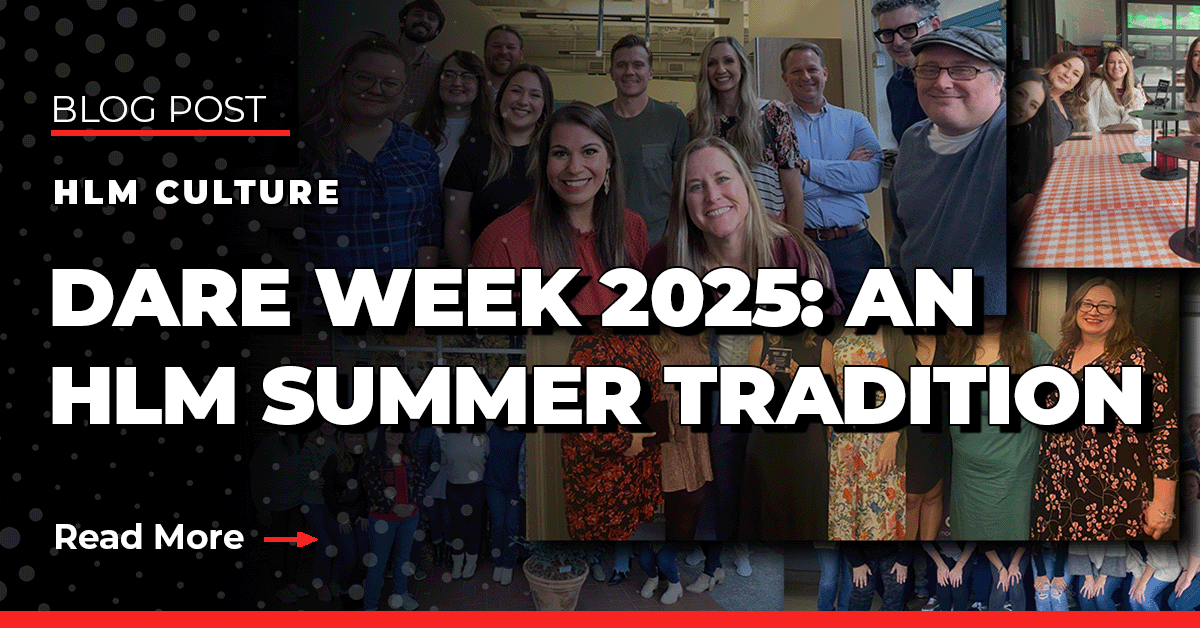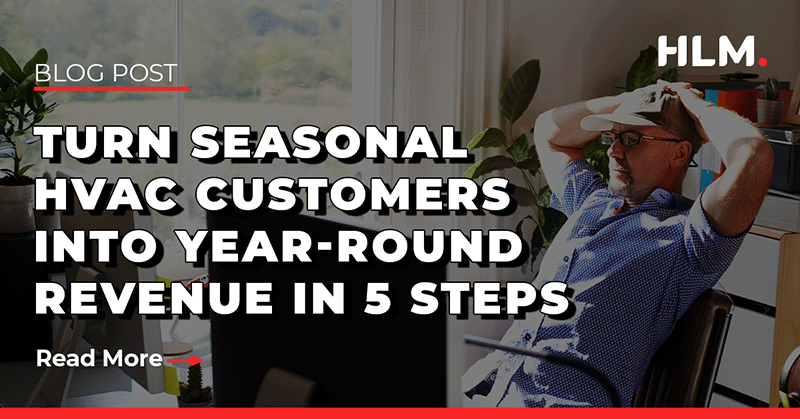![]() By Emily Croslin
Jul 21, 2023 9:14:00 AM
By Emily Croslin
Jul 21, 2023 9:14:00 AM
.jpg)
If you landed on this page and are reading this blog, there's a high probability you found this content through a search engine. In fact, 93% of all website traffic comes through search engines.
It’s also safe to assume the reason you're here is that you want to learn more about Search Engine Optimization (SEO).
Maybe you want to ramp up your SEO efforts this year to drive more qualified traffic and ultimately win more customers. Or perhaps you want to learn more about SEO as a marketing tactic to determine if it's a good fit for your business.
If you're looking for answers to those questions then congratulations, you're in the right place.
In this blog, we'll show you how to focus your SEO efforts on what matters most so you can improve your rankings, drive high-quality web traffic, and ultimately grow your business. Let’s dig in.

What is SEO and How Does It Work?
Search Engine Optimization (SEO) is the process of affecting the online visibility of a website or a web page in a search engine’s unpaid results section. This is often referred to as organic or earned traffic.
Driving organic traffic today is more than keywords, it's a multidisciplinary effort executed to improve organic rankings, bring more traffic to your website, and drive lead generation.
Now that we’ve defined SEO, let’s examine the different areas and tactics you need to focus on to drive more potential customers to your website.
Developing Your Ideal Customer Profile and Buying Personas
To develop the most effective SEO strategy, begin by understanding your customers—their needs, preferences, and behavior. While SEO is ever-changing, one constant you can always count on is the significance of catering to your target audience.
Knowing your customers forms the bedrock of a successful SEO approach. As algorithms evolve, and new techniques emerge, your customer-centric focus will remain the driving force behind your online success. By empathizing with your audience and tailoring your content to meet their specific demands, you'll forge a strong connection that withstands the test of time.
So, when diving into the dynamic world of SEO, remember that it all starts with your customers. Uncover their desires, address their pain points, and serve them with value-packed solutions. This customer-driven approach will propel your SEO endeavors to new heights and establish your brand as a leader in the digital realm.
To begin, develop a profile of your customers with all the relevant information you have available.
When creating ideal customer personas for your marketing strategy, it's crucial to understand and segment your target audience effectively. Here are four key persona categories that can help you develop a comprehensive understanding of your ideal customers:
- Demographic Information:
- Age: Determine the age range of your target audience. Are they young adults, middle-aged, or seniors?
- Gender: Identify the gender(s) your products or services cater to.
- Location: Determine the geographical location(s) where your target audience resides.
- Education: Consider the educational background of your ideal customers.
- Occupation: Understand the types of jobs or industries they are associated with.
- Income: Determine the income levels of your target audience.
- Psychographic Information:
- Interests: Identify the hobbies, activities, or topics that your ideal customers are interested in.
- Lifestyle: Understand the lifestyle choices, values, and beliefs of your target audience.
- Personality traits: Determine the dominant personality traits that resonate with your ideal customers.
- Attitudes: Identify the attitudes, opinions, or perspectives that shape their decision-making process.
- Motivations: Understand the underlying motivations and desires that drive their behavior.
- Behavioral Information
- Buying behavior: Analyze how your target audience approaches the purchasing process. Are they impulse buyers, methodical researchers, or price-conscious?
- Brand loyalty: Determine the level of loyalty your ideal customers exhibit towards certain brands or products.
- Online behavior: Understand how your target audience interacts with digital platforms, social media, and online communities.
- Consumption habits: Analyze their consumption habits, such as how frequently they use or purchase products or services within your industry.
- Influencers: Identify the key factors or individuals that influence their decision-making process.
- Technographic Information:
- Technology proficiency: Determine the level of technological proficiency and familiarity your ideal customers possess.
- Device preference: Understand whether they primarily use desktops, laptops, smartphones, or tablets to access digital content.
- Online platforms: Identify the social media platforms, websites, or apps they frequently use.
- Communication channels: Determine their preferred communication channels, such as email, messaging apps, or phone calls.
- Tech adoption: Analyze their willingness to adopt new technologies and stay up-to-date with digital trends.
By combining these four persona categories, you can create detailed and insightful profiles of your ideal customers. This understanding will allow you to tailor your marketing messages, develop targeted campaigns, and provide personalized experiences that resonate with your audience, ultimately driving engagement and conversions and strengthening your SEO content.
Once you’ve identified these key pieces of information, you’ll want to consider what your audience is seeking.
What needs, desires, or problems do you solve for them? What common questions do they ask to gather information and find a solution? What's their typical path to interact with your business that leads them to ultimately make a purchase from you? This is often referred to as the "buyer's journey".
Once you have these answers, you've developed your Ideal Customer Profile (ICP).
Now that you have your ICP, you can build a Customer Persona. Your goal is to describe your customer(s) in a simple narrative that brings them to life. Name the person and describe them in a way that somebody could clearly picture where they live, what they do, what they care about, etc. Not only does this bring clarity for who you should target with your marketing efforts, but it also establishes a baseline where you can begin to develop your content strategy.
Create Relevant and Quality Content
Once you have nailed your ICP and buying personas, it’s time to start working on content development.
Creating relevant and quality content that answers your customers’ questions is a key component for improving your organic ranking and driving website traffic.
Why?
Google (along with the other major search engines) strives for relevancy — in other words, they want to provide the best response to the person doing the search. Creating quality, relevant content, relevant to the more than 5+ billion daily searches will result in your website being rewarded with a significantly better overall organic ranking.
Now think about the impact this can have on your business. Executing a content plan that's designed to speak directly to solving your ideal customer’s problems not only positions your company as an expert but also nurtures prospects through the “buyer's journey” along the path to decision and purchase.
It's key that your content is written for humans and not for machines. Sure, it matters that your content is optimized to rank by using header tags, meta descriptions, page titles, and geotags but it's people who'll be reading the content. If customers deem your content to be valuable – by consuming and engaging it – search engines will reward you.
This means more quality traffic to your site, more potential leads, and ultimately, more customers.
Pay Attention to Your Off-Site SEO
Simply stated, Off-Site SEO (otherwise known as Off-Page SEO), refers to any actions taken outside of your website that impact your rankings on Search Engine Results Pages (SERPs). This ranges from ensuring your business is accurately showing on relevant business directories all the way to link building.
In fact, 50% of SEO professionals that participated in a Moz survey considered link building to be one of the strongest ranking factors for your website.
But what is link building exactly?
Link building or "backlinking" is the process of getting other sites to link back to your website. This is important because every site carries authority in its own right.
From a macro level, the more backlinks you have from high quality websites, the greater your authority and trust are shown to search engines. In turn, this tells search engines that your site is both valuable and trustworthy which causes search engines like Google to reward your site by improving its organic rank.
Another major key factor in Off-Site SEO is having consistency in your name, address, and phone number (NAP) across hundreds of different website directories. This is also one of the easiest, albeit time-consuming, ranking factors that you can control. You don’t have to be a web expert or fantastic content writer to assist in this part of your SEO strategy, you just have to clean up your business listings on sites like Yelp, Google Business Profile, Facebook, etc.
Even the smallest difference in your listing can throw off your organic ranking. For example, if your address on Yelp is “700 Montgomery Highway” but on Facebook, you’re listed as “700 Montgomery Hwy” that small difference in abbreviating “highway” can negatively impact your organic ranking. The good news is that these mistakes are 100% preventable if you commit to consistency, which will better your rankings for Local SEO as well.
No time to dedicate to ensuring NAP consistency for your business? We get it. That's why we included Core70 technology in our exclusive Footprint™ Platform. HLM clients get peace of mind knowing NAP consistency and directory listings are part of their ongoing SEO strategy from HLM. Clients can log into their Footprint Dashboard 24/7 to see their business listings and see their directory listings and traffic at-a-glance.
What is Local Search?
Local SEO is optimizing your site to show up in local search results. When people do a query that search engines deem “local” in nature, they’ll produce local results. These results may trigger a new section with the search results to populate, commonly referred to as the Google Maps section.
There are three main components to local search:
- Proximity: How close is your business to the searcher?
- Relevance: How relevant are your products and services to the searcher?
- Prominence: What are your customers saying about you online? (Google Reviews, Facebook, etc.)
Why Does Local Search Matter?
For starters, 46% of all searches on Google are for a local business.
Think about what your daily searches look like. Sure, a lot of the time you're searching for something for work or how-to’s but oftentimes you’re searching for things like “dry cleaners” or “Chinese food.” When these searches are performed, the majority of the results will be local businesses relevant to your search. Consumers engage frequently with Google Business Profiles (Google Maps), as it provides them with a quick overview of business reviews, photos, and easy contact information.
Local search is an important component of your SEO strategy because almost every business at some point relies on local customers as part of its growth and sustainability plan.
Want to get better rankings for your business?
Request a FREE Local Market Report
One of the ranking factors above that might surprise you is probably social signals. While it’s believed that social media is not necessarily a direct ranking factor for Google, it does play a big role in driving in-direct traffic to your website.
Platforms like Facebook, Yelp, Trip Advisor, etc. send trust signals to search engines helping to prove your business’s relevance to consumers.
Technical SEO, Simplified.
Technical SEO, as you may have guessed, is anything but simple.
In short, Technical SEO is anything that you do to your website to help it become more indexable by search engines. While On-Page SEO focuses on what users actually see, Technical SEO focuses on search engines and crawlers.
For Technical SEO to be effective, you have to first ensure that the back end of your website is healthy and ready to be indexed by search engines.
Technical SEO Elements to Look Out For:
Have a Mobile-Friendly Website
Having a mobile-friendly website is becoming increasingly important. As technology continues to advance, and more searches are done on mobile devices, having a website that looks good on mobile, as well as desktop, is essential.
For many sites and content management systems, the hard work is done. For more technical website builds, making your site mobile-friendly will typically need help from highly experienced developers.
What is your Site Speed?
Following the trend of more sites focusing on the mobile experience, site speed is another technical component to focus on. The faster a website, the better the user experience, which directly correlates with conversions. You can easily check your page speed with services like Google Page Insights and Pingdom Web Tool. These tools can give you an accurate read on your website's speed and also provide insight into what needs attention to improve that speed. Sometimes page speed can be improved by adding a couple of easy plugins, but in many cases, you’ll need to call on a skilled developer to get the job done.
Beware of Duplicate Content
Duplicate content, titles, and descriptions all have a negative impact on a website’s ranking factor. Seeking to show the most relevant information at all times, when search engines come across content that appears to be duplicated, a decision has to be made.
Without fail the search engine will choose the page that seems to be the most important to users — meaning the other pages won’t show up.
This can be damaging to your organic rankings because you always want your content ranking to get the absolute most exposure. Not sure if you have duplicate content? No worries. You can use a site auditor, like Screaming Frog or Site Bulb, to identify duplicate issues and fix them.
XML Sitemap: Google’s Guide to Your Website
An XML Sitemap is a file that lists the pages, posts, and PDFs on a website. Google Search Console accepts many different formats for the sitemaps, but the preferred and most optimal format is an XML file.
The XML Sitemap tells search engines what pages are on a site so they know what to index. It also contains information about pages on the site like priority, update frequency, and taxonomy. Always submit a sitemap to search engines’ search consoles to ensure that your pages are being properly indexed.
SEO is Evolving: Two Key Trends to Watch
As if five to six hundred algorithm changes a year isn’t enough, there are other factors that play into SEO’s ever-evolving landscape. Let's focus on two areas that are the driving force behind the evolution of SEO today: Featured Snippets and Voice Search.
What is a Featured Snippet?
Featured Snippets are not exactly new to Google, but you have probably noticed that over the last few years, their popularity has evolved. They are designed to answer questions searched to provide a relevant experience to users.
A Featured Snippet, also known as “Position Zero”, is present in about 15% of all searches. Also considered to be in Position Zero, is the “People Also Ask” section on the SERP.
When your website appears in either of these sections, it can drive up to 2X the amount of website traffic as position one in the organic results.
So how do you get your website to appear in a Featured Snippet or the People Also Ask section?
There are a lot of ranking factors that weigh into Position Zero. For starters, you need to be ranked in the top ten on page one of the SERP to get a shot at one of these coveted spots. Also, the type of content you produce should be highly relevant to your customers with your site optimized for the questions that you predict your customers will be searching for.
Something else to consider is your website's User Experience (UX). Making sure that your customers can easily find the content they are looking for is a huge component that has a significant impact on your chances of getting a position zero rank. And of course, Technical SEO plays a major role in bettering your chance to achieve this high-traffic spot.
The good news? There is no way to guarantee that you get the coveted position zero spot. The best tactic is to write great content and to thoroughly answer questions that you think searchers might type in. Understanding user intent and solving their problems is the best and most effective way for targeting Position Zero. Google will crawl your page and reward you for your effort.
This is further proof that it takes more than just a page one rank for your SEO strategy to be successful.
Hey Siri, why is Voice Search a feature to consider when creating your SEO strategy?
Think about the way we search for things now. We typically type or use voice search and phrase the search like a question. How close is the nearest Starbucks? or How many cups are in a gallon? Our searches are becoming more and more relational so your SEO strategy needs to plan accordingly.
To target voice search, your strategy should be flexible. Just like with featured snippets, you should strive to answer whatever question a person might be asking the way they might be asking. Additionally, a stronger emphasis on brands is evolving as a result of voice search. People will search Where can I get Chips Ahoy? before they ask Where can I get chocolate chip cookies?
Building a robust digital marketing and branding campaign, in conjunction with a strong SEO strategy is the key to dominating voice search.
SEO Is Not Just Keywords
SEO is not just one thing. It’s not just keywords, business listings, content, or local search, it’s all of these things, and more, working in tandem to create a better environment for your website to rank organically. The stronger your SEO strategy, the more you will see an increase in overall website traffic.
SEO also helps to create brand awareness by putting your website in front of your customers every time they search for answers to their questions and problems.
The content created for your SEO campaign will also better serve your ICP’s which means you’ll begin to see more high-quality leads filter in.
If you commit to allocating the resources needed to address all of these ranking factors we have discussed, you are going to dominate the competition and win.
SEO Frequently Asked Questions
What is SEO and How Does it Work?
Search engine optimization (SEO) is the process of affecting the online visibility of a website or a web page in a search engine’s unpaid results section. This is often referred to as organic or earned traffic. There are many factors that weigh into an SEO strategy that affects your organic rankings, website traffic, and the overall growth of your business through lead generation.
SEO is important for businesses today for a number of reasons. For starters, 93% of all website traffic comes from search engines. If your customers can not find your website quickly, and on the first page of Google, then you will lose them to your competitors that they find instead. Increased exposure on search engines leads to more overall website traffic that ultimately results in the growth of your business.
A Featured Snippet, also known as “Position Zero”, is present in about 15% of all searches. Also considered to be in Position Zero, is the “People Also Ask” section on the SERP. When your website appears in either of these sections, it can drive up to 2X the amount of website traffic as position one in the organic results.
To increase the rank of your website you should optimize it for specific keywords and also be aware of the on-site and off-site factors that affect organic rankings. Because search engines are continually trying to provide the best results to a search query, you should also have website content that best pertains to the type of searches you know your customers are performing.
SEO isn’t technically free, even though the listings are in the “unpaid” section of the SERP. It takes time, energy, effort, and resources – either internally or through a partnership with an SEO expert to achieve a desirable organic rank.
Author: Emily Croslin
Contact Us NowRecent Posts
When you're done with this post, check out our other content below for more Digital Marketing expertise
Contact Us Today
Complete the form below and receive a call within minutes.
Need faster results? Call us now at (888) 717-4249





